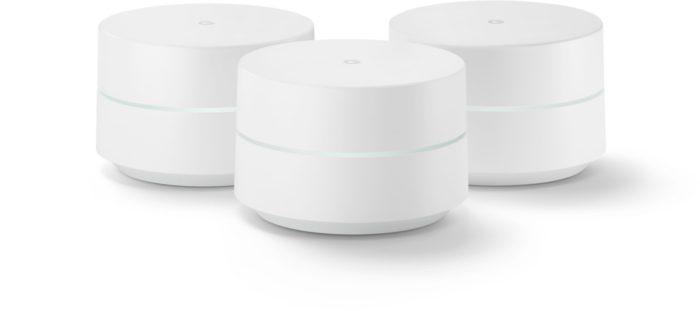On last week’s IoT Podcast, our voicemail hotline got a question from Mike about his smart Christmas lights. It turns out that he’s having issues connecting them to his home Wi-Fi network, which is built around a Google OnHub. It also turns out that this is a common problem, even though Wi-Fi smart lights, switches, doorbells and other devices are built around Wi-Fi standards, and therefore should just work on the network.
This is a two-part problem directly related to the growing number of mesh Wi-Fi networks, which is what Mike is using in his home. The other piece to this puzzle is the Wi-Fi chips used in many smart home devices.
Remember, mesh Wi-Fi networks combine both 2.4 GHz and 5 GHz frequencies into a single network. That’s different from the “old days” where a router often had a separate network for each of these signals. In that scenario, you’d have two different networks in your home; with today’s mesh networks, you only have one.

So that presents a challenge for devices using lower-cost 2.4 GHz Wi-Fi chips because they’re looking for a 2.4 GHz network to latch on to. And in a mesh network situation, there really isn’t one to find, hence the problem.
I’ve experienced this problem myself on a number of devices with my Google Wi-Fi setup; it’s frustrating, to say the least. At the 2018 Consumer Electronics Show in January, I spoke with several industry contacts who make Wi-Fi smart devices and they’re well aware of the problem. Some weren’t prepared for the fast uptake of mesh networks in the home, while others said the standards were still evolving. In either case, they chose 2.4 GHz wireless chips for network connectivity at the time.
The situation is likely to get better but it won’t happen overnight since designing and producing hardware can take months, if not years. So what can you do now if you’re having the same issues as Mike?
Your best bet is to manually set up a separate low-cost 2.4GHz router that’s attached to your mesh network, unfortunately. Yes, this could confuse things since you’ll now be back to a dual-network situation but you only need the new 2.4GHz option for any smart devices that can’t seem to connect to your mesh network.
To hear Mike’s question in full, as well as our conversation about the issue and solution, tune in to the podcast below.
Want the latest IoT news and analysis? Get my newsletter in your inbox every Friday.








